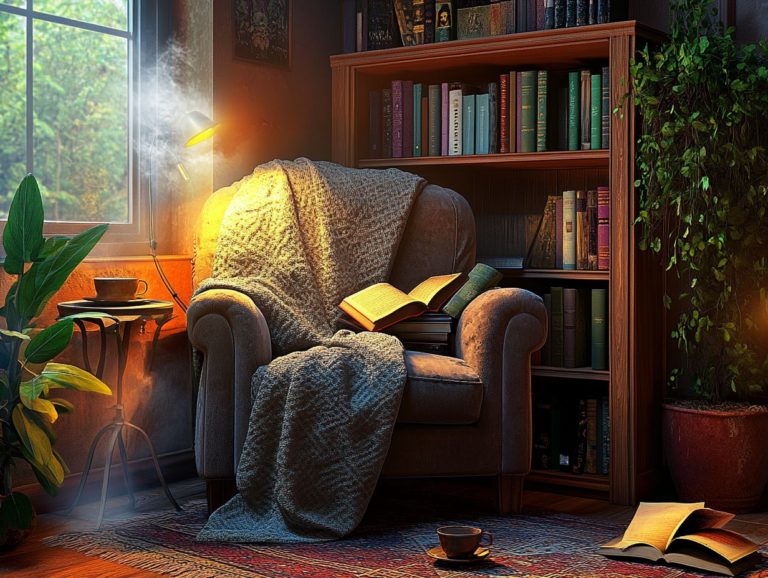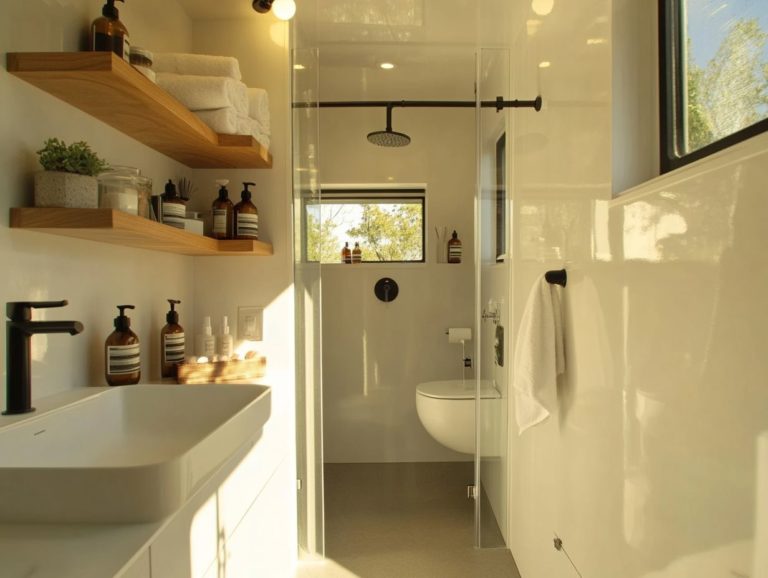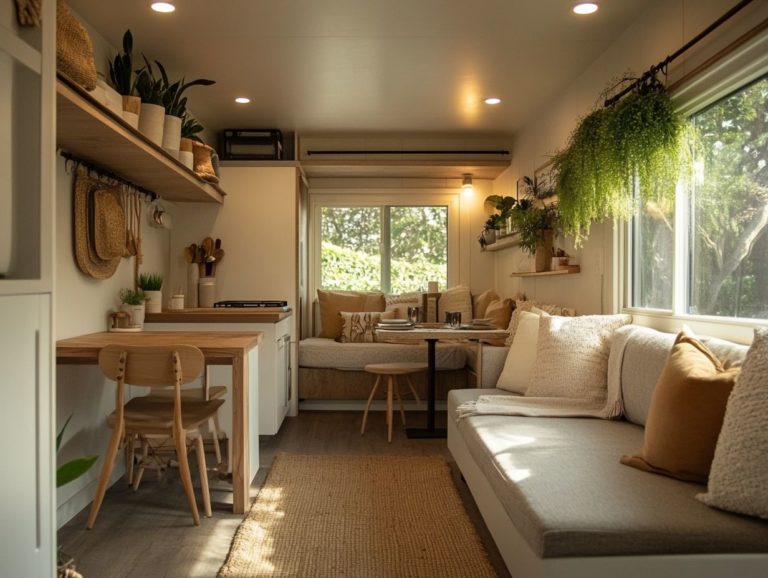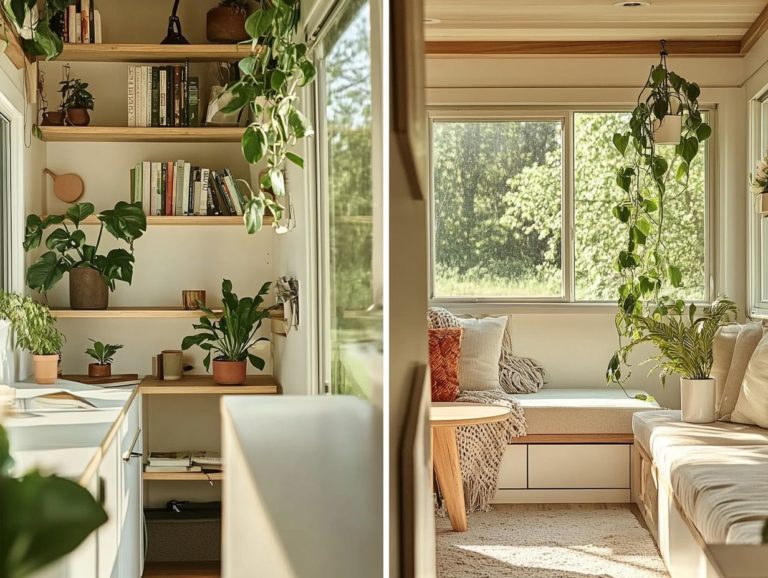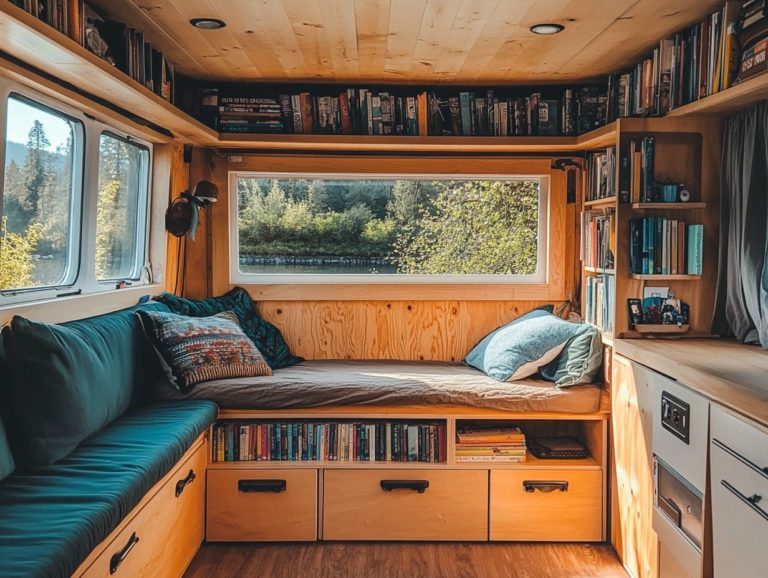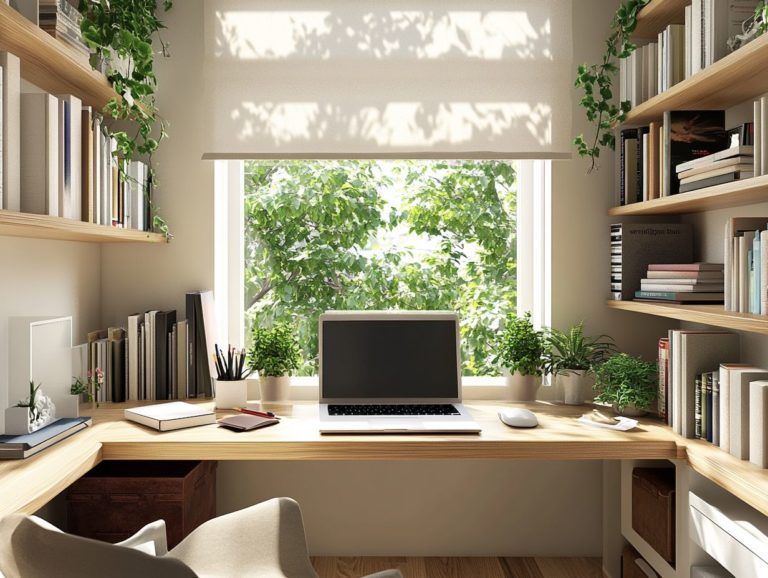Using Color to Make Spaces Feel Larger
Color transcends mere visual appeal; it possesses the remarkable ability to influence emotions and perceptions profoundly.
This article delves into the art of leveraging color psychology to craft the illusion of larger, more inviting spaces within your home. By understanding how light and dark hues work, along with employing cool tones (like blues and greens) and warm tones (such as reds and yellows), you ll uncover strategies to maximize depth and dimension in your interiors.
You will also find practical tips on enhancing natural light and selecting the right furniture, ensuring your rooms exude an expansive feel.
Get ready to transform your space like never before!
Contents [hide]
- Key Takeaways:
- The Psychology of Color
- Choosing Colors to Create the Illusion of Space
- Using Color to Create Depth and Dimension
- Additional Tips for Making Spaces Feel Larger
- Frequently Asked Questions
- How can color be used to make a space feel larger?
- Which colors should I use to make a space feel larger?
- Can using too many colors make a space feel smaller?
- What role do contrast and lighting play in making a space feel larger?
- Is it necessary to use only light colors to make a space feel larger?
- Can color be used to visually divide a small space and make it feel larger?
Key Takeaways:
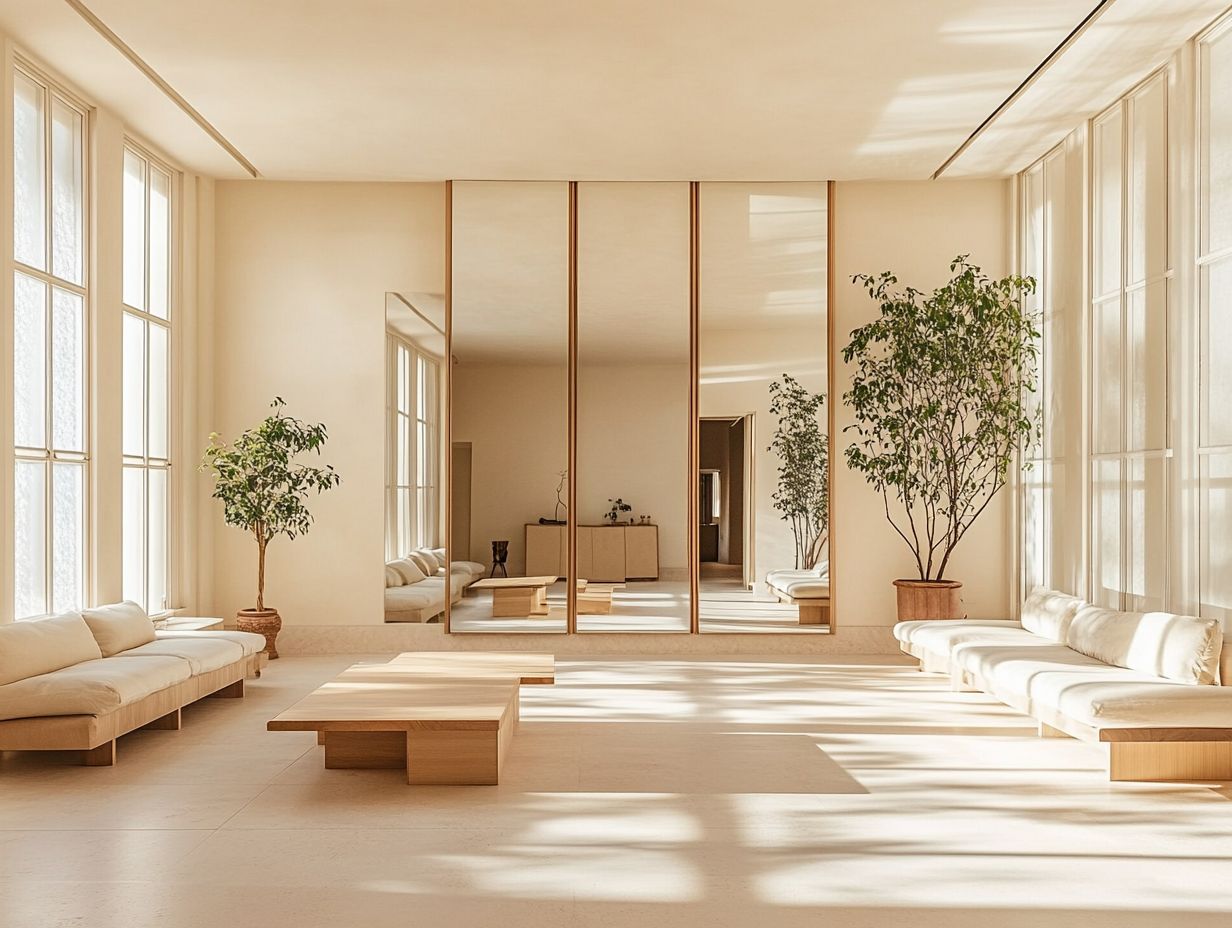
- Understand how color psychology can impact how you feel in a space.
- Use light, cool colors and strategic placement to create an illusion of space.
- Incorporate depth and dimension with accent walls and proper furniture placement while maximizing natural light and keeping the space clutter-free.
The Psychology of Color
The psychology of color is an essential element in how you decorate your home, profoundly influencing your perception and experience of both small rooms and expansive spaces. By grasping the emotional and psychological impacts of various paint colors, you can make informed decisions about your color palette and elevate the visual appeal of your living environment.
Selecting the right hues for different types of rooms allows you to transform your spaces, evoking feelings of warmth, calmness, or even vibrancy effectively mirroring your personal style and enhancing your home decor.
How Color Can Affect Perception
Color perception is a fascinating phenomenon that significantly influences the atmosphere of a space, especially in the realm of interior design.
In smaller rooms, your choice of color can create an illusion of openness or make the space feel snug and intimate. Warm colors like yellows and oranges envelop you in a sense of tranquility, crafting an inviting atmosphere, yet they may also visually constrict the space. Soft golden hues, for instance, wrap a room in comfort, creating a cozy cocoon.
Conversely, cooler colors, such as pastel blues or greens, impart a refreshing and airy feel. A tranquil seafoam green, for example, evokes calmness and enhances the illusion of depth, making a compact area feel more expansive.
Ultimately, the interplay of these colors not only establishes the mood but also shapes how you perceive and experience the dimensions of your surroundings.
Choosing Colors to Create the Illusion of Space
Choosing the right colors is crucial for crafting a sense of space in your home decor, especially in small rooms that often feel cramped. Light shades like pale blue or soft taupe can open up a room, creating an airy, expansive feel.
On the other hand, dark colors can absorb light, bringing a sense of intimacy; when used thoughtfully, they can also add depth and dimension. By understanding the principles of color palettes, you can elevate your interior design and make choices that resonate with your personal aesthetic.
Light vs. Dark Colors
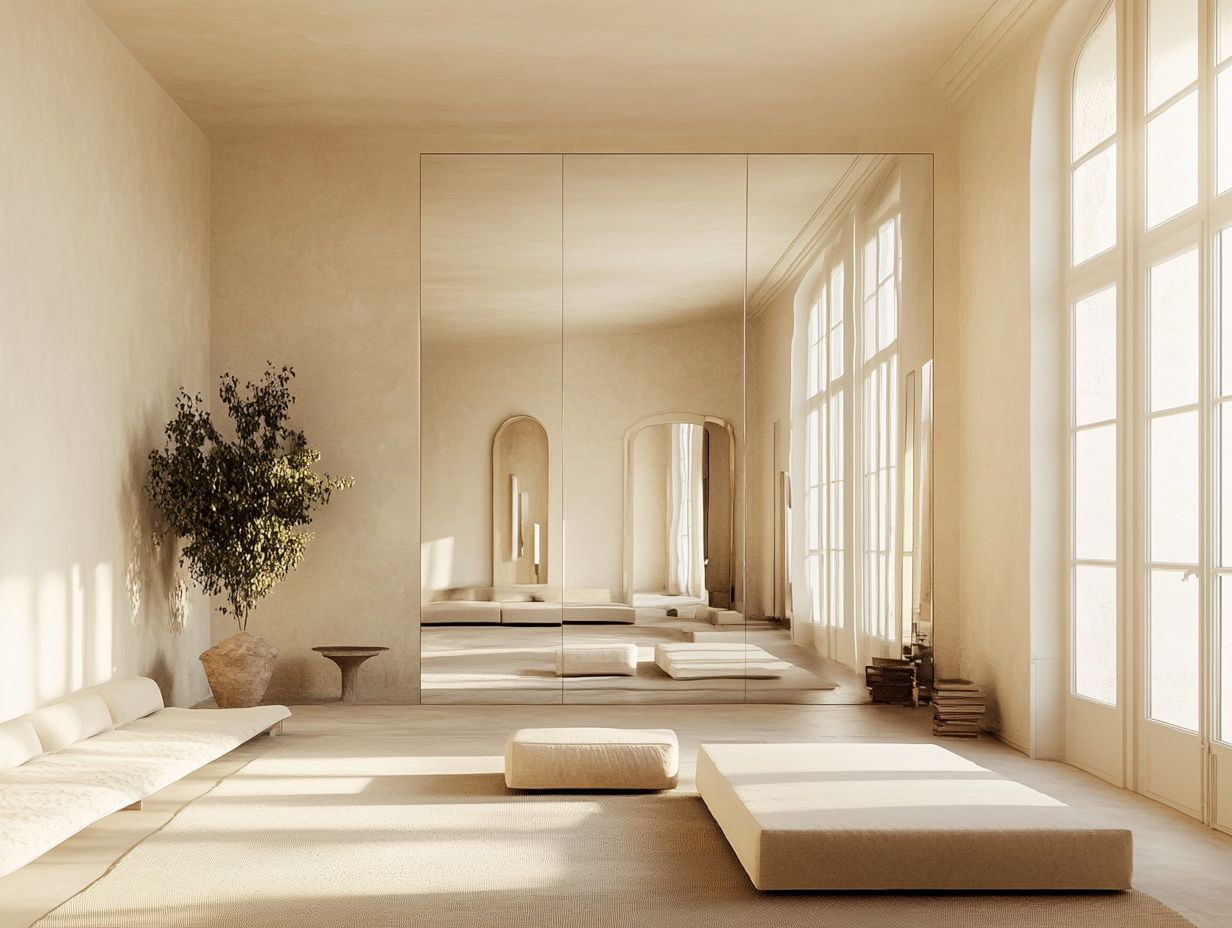
The decision between light and dark colors can profoundly influence the atmosphere and perception of a room’s space.
Opting for light colors, like soft pastels and whites, can amplify natural light, creating an airy ambiance that makes smaller areas feel more expansive. This effect is particularly advantageous in spaces such as kitchens, where a bright, open environment is often desired for cooking and socializing.
Conversely, incorporating dark colors as an accent wall can introduce a sense of drama and sophistication, adding depth to living rooms while establishing a cozy nook for gatherings. The thoughtful application of these colors not only showcases personal style but also transforms the mood of each space, allowing it to adapt seamlessly to various functions and atmospheres.
Try these color tips today and see the difference in your space!
Cool vs. Warm Colors
The distinction between cool and warm colors is crucial in interior design. Each can evoke different emotional responses and profoundly influence the mood of a space.
For instance, when you opt for cool colors like lavender and cool gray in bedrooms and serene areas, you create an atmosphere of tranquility that helps you relax and unwind.
On the flip side, warm tones like blush pink bring an inviting ambiance, making them ideal for social spaces such as living rooms and kitchens.
This contrast gives you the power to curate color palettes that align perfectly with each room’s intended function. This ensures the environment feels either peaceful or invigorating as needed.
This nuanced understanding of color dynamics will guide your selections, enhancing both the aesthetic appeal and emotional comfort of your home.
Using Color to Create Depth and Dimension
Strategically using color enhances the perception of depth and dimension in small rooms. This helps create visually appealing spaces that feel both expansive and stylish, especially through the use of paint techniques.
Techniques like incorporating accent walls can draw the eye and establish focal points. Carefully chosen colors can guide the flow of the room.
Understanding that the right combination of shades can transform a confined area into a welcoming environment is crucial for you. It s essential to consider both the structure and the atmosphere you wish to create.
Accent Walls and Strategic Placement
Accent walls are your secret weapon in interior design! They allow you to craft striking focal points that elevate the aesthetic of even the smallest rooms.
When you re choosing the ideal wall for your accent, it s crucial to consider not just the layout but also how different colors can shape the mood and perception of your space.
For example, a soft black can evoke a sense of elegance, while a deep navy infuses the room with depth and richness, creating a cozy atmosphere.
To ensure your accent wall complements the rest of your decor, explore various color techniques, such as using complementary shades or subtle textures. This thoughtful approach can seamlessly unify your entire color palette, making the room feel both cohesive and inviting.
Additional Tips for Making Spaces Feel Larger
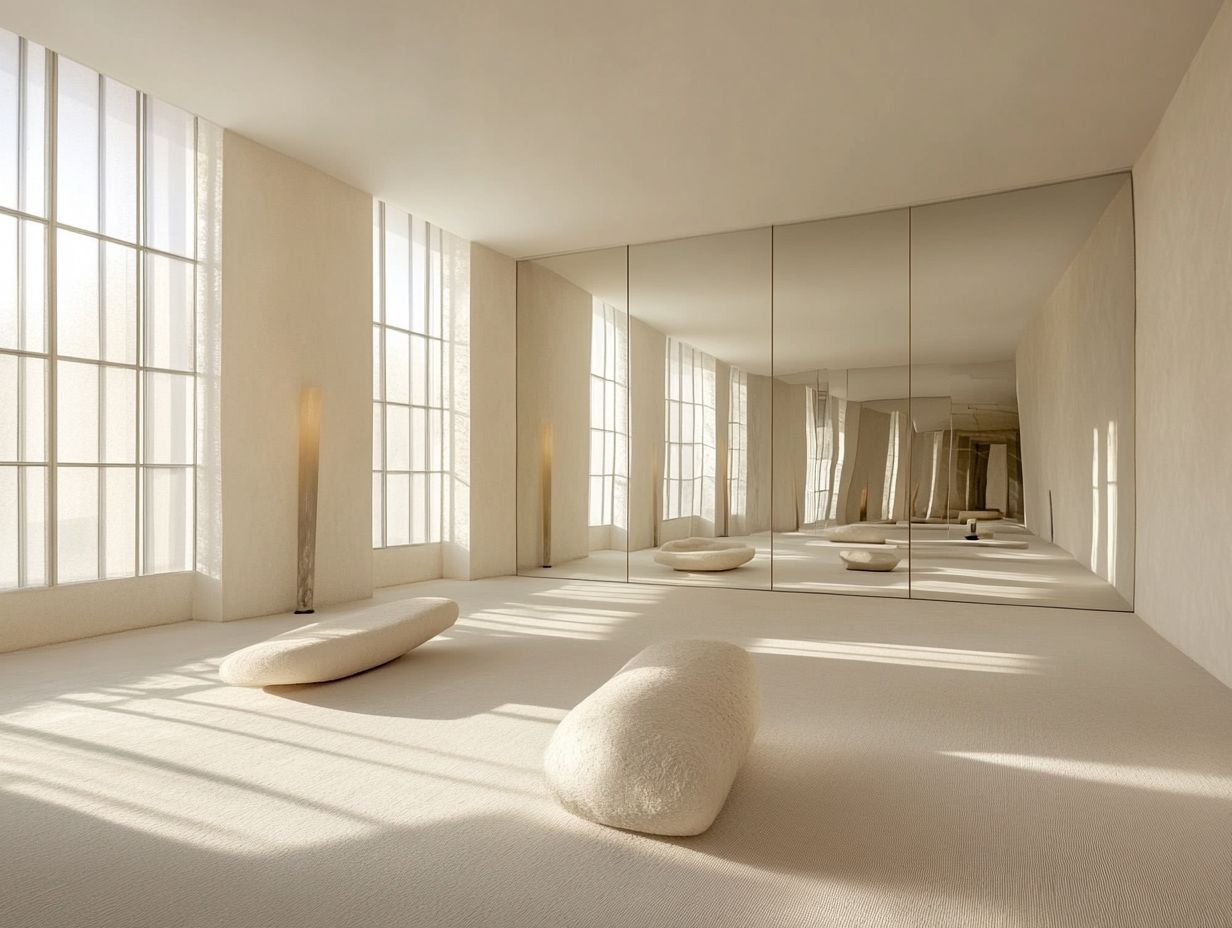
To elevate the sense of space in small rooms, you can implement several effective strategies that center on maximizing natural light, decluttering, and selecting the right furniture.
Letting natural light in, choosing light hues like taupe for walls, and selecting proportionate furniture creates an illusion of a larger area.
These thoughtful approaches not only enhance visual appeal but also significantly boost overall comfort and functionality.
Maximizing Natural Light
Maximizing natural light is one of the most effective ways for you to enhance the perception of space in small rooms.
By integrating various strategies, you can transform dimly lit environments into bright, inviting areas.
Consider using sheer curtains to allow sunlight to filter through while still maintaining your privacy; they re an ideal choice for windows.
Placing mirrors strategically can also amplify the light entering the room, creating an illusion of depth and openness.
When you couple this with a thoughtful selection of light colors for your walls and decor colors that reflect light and contribute to an airy atmosphere you collectively foster a harmonious living space that feels larger and more welcoming.
Decluttering and Organization
Decluttering and organization are essential for making small rooms feel larger and more inviting. By assessing your belongings and parting ways with items that no longer serve a purpose, you create an open, airy ambiance that invites relaxation.
Use smart storage options, like multi-functional furniture such as ottomans with hidden compartments or wall-mounted shelves to enhance functionality in your space. Incorporate transparent containers or labeled baskets to ensure everything has a designated spot, maintaining visibility and accessibility.
Make the most of your vertical space! Hanging artwork or creating a pegboard for tools and accessories draws the eye upwards, contributing to that coveted sense of spaciousness. Every small adjustment you make plays a crucial role in transforming a cramped area into your serene sanctuary.
Choosing the Right Furniture
Choosing the right furniture is crucial for enhancing both the functionality and perception of your space, especially in small rooms. Multipurpose pieces can maximize functionality.
When selecting furniture, pay attention to its dimensions and how it harmonizes with your overall aesthetic. Opt for furniture with a sleek profile to avoid the cramped feeling that often plagues smaller spaces. Consider multifunctional options, like sofa beds or coffee tables with built-in storage; these can optimize your limited square footage. Thoughtful layout strategies, such as arranging seating to encourage conversation while maintaining a smooth flow, can transform your small area into a cozy gathering spot.
Find the right mix of style and utility. Every inch can become a joy to maximize!
Frequently Asked Questions
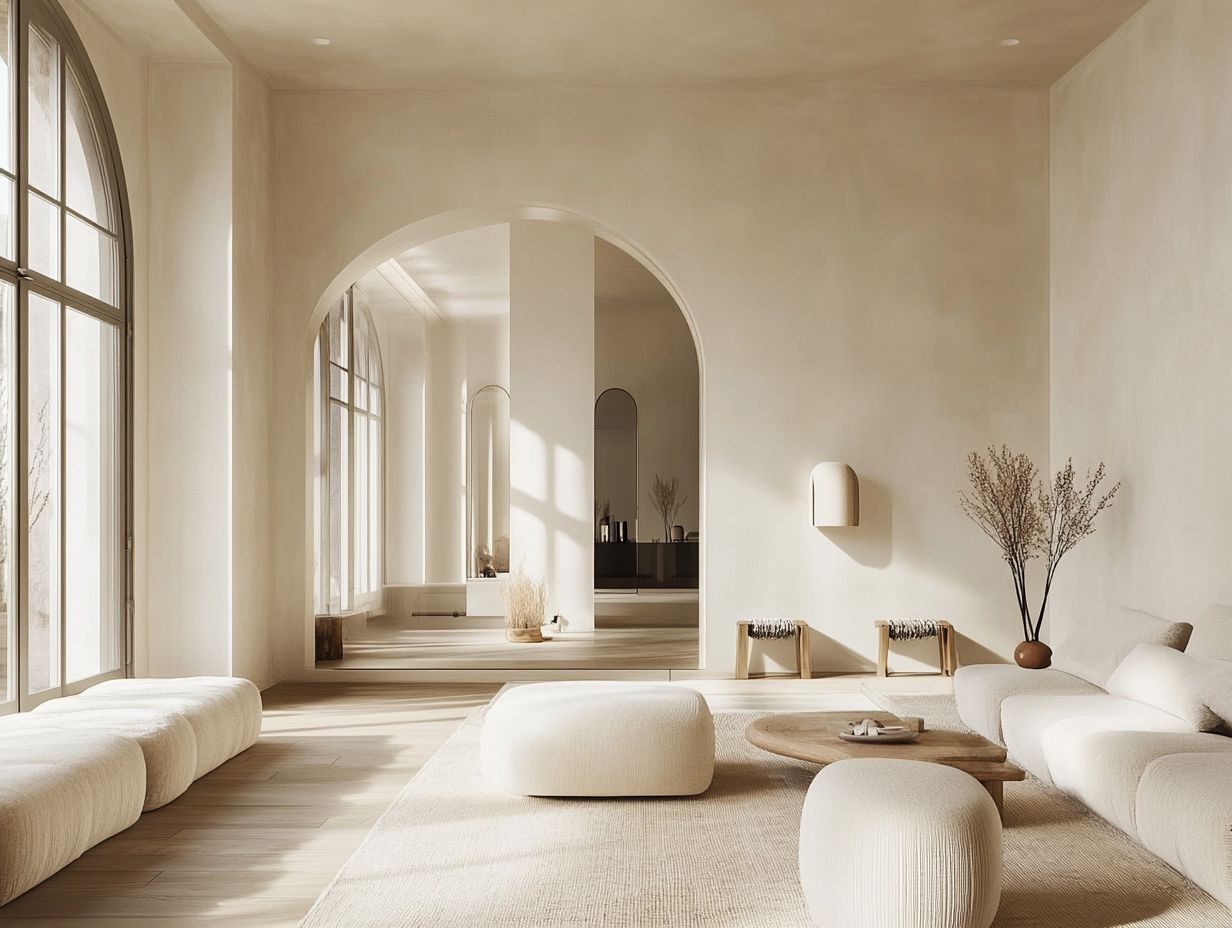
How can color be used to make a space feel larger?
Color creates the illusion of depth, making a space feel larger than it is. Lighter colors make a space feel open and airy, while darker colors can create a closed-in feeling. Choosing the right color palette, including shades like Blush Pink and Soft Black, greatly influences the perception of space.
Which colors should I use to make a space feel larger?
Light and cool colors like pastels, whites, and grays create the feeling of more space. These colors reflect light, making a room appear more open and spacious. Consider using:
- Pale Blue
- Cool Gray
Can using too many colors make a space feel smaller?
Yes, using too many colors or bold patterns can overwhelm a space and make it feel smaller. Stick to a simple color palette with a few accent colors, such as Dark Navy or Light Taupe, to create a more open feel.
What role do contrast and lighting play in making a space feel larger?
Contrast and lighting are crucial when using color to create a spacious feel. Using Stark White against darker shades adds exciting depth and enhances brightness.
Is it necessary to use only light colors to make a space feel larger?
No, darker colors can be used effectively to create spaciousness. A feature wall in Dark Blue can add depth and make the space feel more expansive.
Can color be used to visually divide a small space and make it feel larger?
Absolutely! Color can create distinct zones in a small space, giving the illusion of more square footage. Use lighter colors for the main area and darker shades for a dining zone to enhance the perception of separate spaces.

